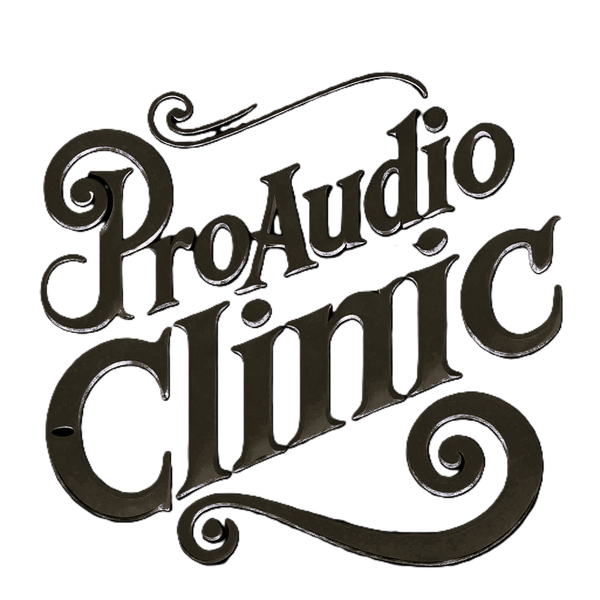
Audio Interfaces and Music Genres: Tailoring Your Setup
Share
Frequently Asked Questions
1. What is the role of an audio interface in music production?
2. How does my music genre affect my choice of audio interface?
3. What features should I look for in an audio interface for rock and metal music?
4. What audio interface features are important for electronic and dance music?
5. How can I find the right audio interface within my budget?
As a music creator, whether you're a novice or a seasoned pro, understanding how to pair the right audio interface with your chosen genre can be a game-changer for your sound. Audio interfaces act as the bridge between your musical instruments and your recording software, converting analog signals into digital form. In this extensive guide, we’ll explore how to choose the ideal audio interface for different music genres and how it impacts your studio gear setup.
The Role of Audio Interfaces in Music Production
Audio interfaces are crucial components of any home studio. They optimize sound quality, reduce latency, and allow for expanded input and output options, ultimately enabling a more professional recording experience. When tailored to a specific genre, they empower musicians to create a sound that resonates with their artistic vision. But how exactly do you choose the right interface for your needs?
Understanding Your Musical Genre
Your genre significantly influences your audio interface choice. Different styles of music have unique requirements for equipment, and your audio interface should align with those needs. Here’s a breakdown of popular music genres and how to gear up accordingly with the right studio gear.
Rock and Metal
The raw power of rock and metal music typically requires high gain inputs to handle electric guitars, bass, and drum kits. For these genres, you want an audio interface equipped with:
- High-quality preamps: Essential for capturing the dynamic range of electric instruments.
- Multiple inputs: Necessary to mic up a full drum kit or record multiple instruments simultaneously.
- Fast and accurate monitoring: Helps in keeping the sound tight, especially in high-speed tracks.
When selecting studio gear for rock and metal, consider interfaces that include instrument inputs specifically designed to handle high output levels. This way, you ensure that your aggressive riffs and pounding drums are recorded with clarity and depth.
Electronic and Dance Music
In electronic or dance music, the emphasis is often on synthesis and intricate layering of sounds. The best audio interfaces for these genres often have features tailored for complex production schemes. Key considerations include:
- Low-latency performance: Critical for live performance and real-time editing.
- MIDI connectivity: Allows for communication with various synths and controllers.
- Multiple outputs: Useful for sending separately mixed sounds to different destinations, like a DJ mixer or an audio system.
Look for studio gear that allows efficient routing and excellent sample rates, as it enables you to achieve that pristine clarity essential for electronic music tracks.
Pop and Hip-Hop
Pop and hip-hop music tends to employ a range of instrumentation and sample-based production. Therefore, the audio interface you choose should excel in a few key areas:
- High input count: Essential for recording layered vocals over beats, with the ability to connect microphones, instruments, and samplers.
- Varied outputs: This allows flexibility in monitoring and mixing different sound sources.
- Quality converters: Important for maintaining the integrity of the sample-based melodies and vocals.
For pop and hip-hop producers, studio gear that facilitates easy integration with software like beat-making programs and DAWs is a must. This ensures your workflow remains smooth and intuitive.
Acoustic and Folk Music
Acoustic and folk genres prioritize natural sound and the essence of live recordings. To capture this authenticity, an audio interface must focus on:
- Exceptional preamps: They improve the capture of vocals and acoustic instruments, providing warmth and richness.
- Simplicity: An easy-to-use interface allows you to focus on your performance and creativity rather than technical issues.
- High-quality audio output: Essential for meaningful monitoring during recordings.
When selecting studio gear for acoustic genres, prioritize interfaces known for their quality preamps and low noise operation. This will help in preserving the true sound of your instruments.
Jazz and Classical Music
Jazz and classical music recordings typically value audio fidelity and the nuances of each instrument. Therefore, an audio interface for these genres should have:
- The ability to record multiple tracks at high quality: Important for capturing the blend of different instruments.
- High sample rates: Important for maintaining sound quality during recordings and mixes.
- MIDI and sync capabilities: Useful if you’re incorporating digital elements or sequencers.
With the right studio gear, musicians can achieve a stunning level of detail, allowing each aspect of a performance to shine through.
Finding the Right Balance
Choosing the right audio interface isn’t just about music genre; it’s also about balancing your needs with your budget. As a musician, investing in studio gear that enhances your sound without breaking the bank is crucial. Here are some tips to help you find that perfect fit:
- Define your needs: Before browsing through options, identify the critical features necessary for your musical style.
- Consider portability: If you often collaborate or perform live, a compact interface is beneficial.
- Read reviews: Look for firsthand accounts from musicians within your genre for insights about different audio interfaces.
The Future of Audio Interfaces
As technology evolves, so do audio interfaces. Many modern interfaces now integrate advanced features like built-in DSP processing and cloud connectivity to enhance your creativity further. It's crucial to stay updated on new trends to ensure your studio gear remains relevant and capable of meeting contemporary music production demands.
Crafting Your Unique Sound
Your choice of audio interface is a pivotal aspect of refining your musical identity. By aligning your setup with your genre, you're not just investing in equipment; you're investing in the future of your music. Remember, the perfect balance between quality and functionality will pave the way for your most ambitious projects.
With these insights in mind, you can make an informed decision tailored specifically to your musical aspirations. Whether it’s rock, electronic, classical, or any other genre, the right audio interface will be your secret weapon in creating professional-sounding recordings that resonate with your audience.
Now go ahead and elevate your sound! Choose wisely, and let your music thrive with the perfect audio setup that reflects your artistic vision.
